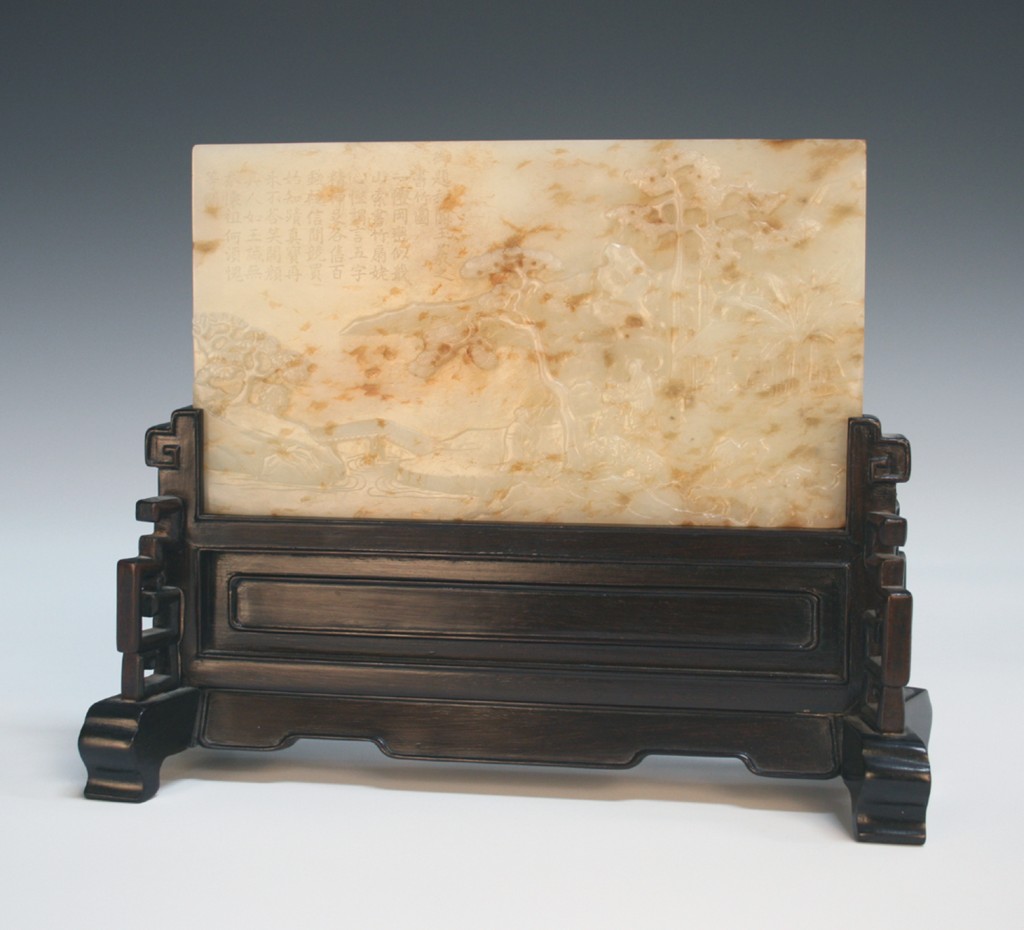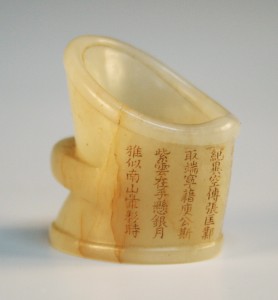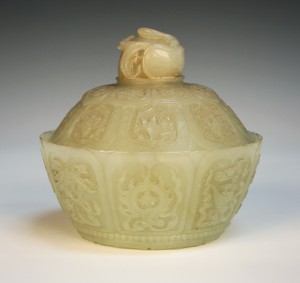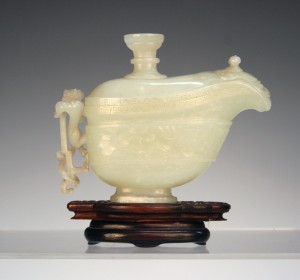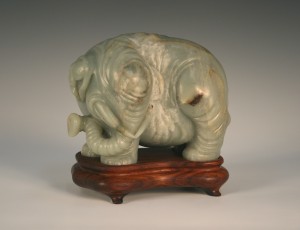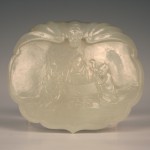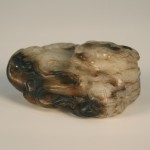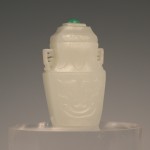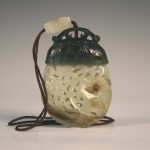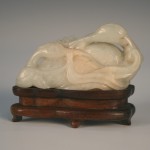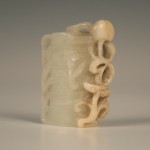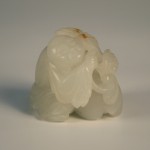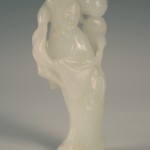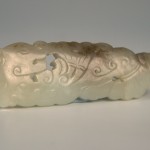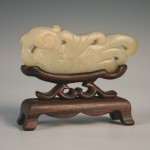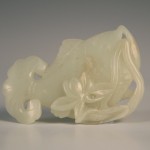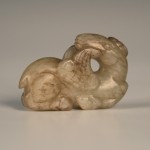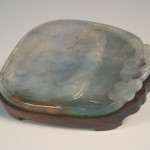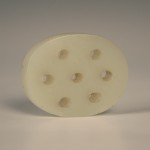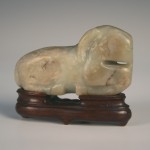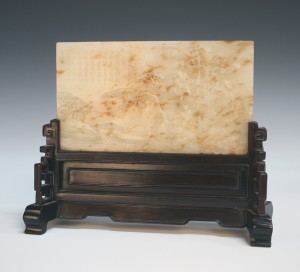
A rare and important archaistic Chinese jade ceremonial blade from the late Shang/early Zhou Dynasty (11th – 15th century BC) has been discovered by Toovey’s specialist, Mark Stonard. This remarkable object formed part of the collection of the late Fred Clark, a gifted and meticulous antiquarian, whose collector’s label it bears.
It is believed that Fred Clark bought it in the years immediately after the Second World War. The blade has an older hand written paper label which offers a translation of the Chinese calligraphy engraved into the jade and also a printed paper segment which reads ‘Beasley Collection’.
It is always the cause of some excitement when an archaic piece surfaces bearing the name of the early 20th century collector Harry Geoffrey Beasley (1882-1939).
Between 1895 and 1939 Beasley put together one of the largest collections of ethnographic material in Britain. The collection was formed of more than 10,000 objects from Asia, Africa, Scandinavia, and across the world. In the years after Beasley’s death in 1939 the majority of the collection was donated to leading British Museums.
The Chinese have always prized jade more highly than gold. This hard translucent stone has, over the centuries, been worked into decorative and ritual objects as well as ceremonial weapons.
Jade was worn by kings and nobles in life and was buried with them, affording the material a high status and associations with immortality.
The Chinese way of life was based on a combination of faith, tradition and ethics which bound families and communities together. The Chinese philosopher, Confucius (551 BC – 479 BC), emphasized the moral responsibility that accompanies authority. Confucius established a school with a radical new principal of accepting students of sufficient intelligence regardless of their background or ability to pay. He combined this belief in meritocracy with a faith in the generous order of a hierarchical society. The hierarchical principles expressed in Confucianism may, perhaps, give some insight into the use of this jade blade. A ruler had a right to obedience and respect but equally had a duty to act justly in the best interests of his subjects. Many academics believe that jade objects like this blade were symbols of office. If this is correct it is probable that blades of this type were used in a similar way to ceremonial jade Kuei tablets of the period. A high ranking courtier would have held the blade to his mouth and spoken through it when addressing the Emperor.
When you hold this ancient ceremonial blade you become aware of the exquisite workmanship employed in its making. The balance and line of the blade work in concert with the patterns in the jade. It has the power to move you and a particular, vital quality to it.
This late Shang/early Zhou Dynasty jade ceremonial blade has just returned from exhibition at the International Asian Art week in London where it attracted much attention and is expected to realise thousands of pounds when it is auctioned at Toovey’s specialist Asian Art sale on Thursday 30th November 2017.
By Rupert Toovey, a senior director of Toovey’s, the leading fine art auction house in West Sussex, based on the A24 at Washington. Originally published in the West Sussex Gazette.
